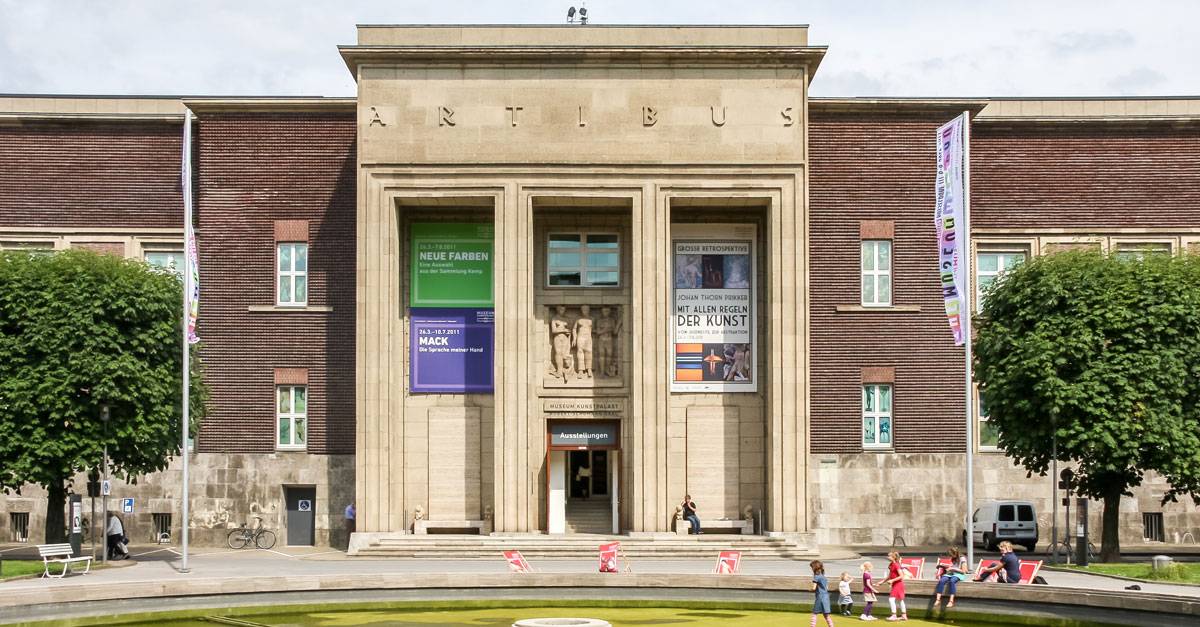A Conceptual Approach to Art Presentation
The revamped Kunstpalast stands out for its innovative approach to presentation. The 5000 square meters of exhibition space have been transformed into a chronological journey where artworks are not separated by region or genre. Instead, they are presented in cross-cultural contexts, allowing visitors to explore the similarities and commonalities of aesthetic trends throughout history. The museum’s goal is to surprise and engage the viewer while creating a sacred and immersive atmosphere.
The journey through the Kunpalast begins in the room titled “Similarities,” where Christian sculptures of the Virgin Mary coexist with Buddhist figures. The juxtaposition of these artworks highlights the common spiritual themes and aesthetics across cultures. The room also features a monumental gate from the 15th century, possibly from Egypt or Syria, further reinforcing cross-cultural associations.
Chronological Exploration of Art History
Moving forward, the Kunstpalast takes visitors on a chronological exploration of art history. Each room offers a thematic focus, showcasing artworks from different periods. The “Man at the Center” room features art from the 15th and 16th centuries, including notable works by artists such as Giovanni Bellini and Lucas Cranach. Another room, titled “Passion and Emotion,” showcases Baroque splendor with renowned works such as “Venus and Adonis” by Peter Paul Rubens.
The presentation of artworks in the Kunstpalast is carefully curated to create an immersive and engaging experience. Objects are primarily displayed in front of vibrant wall colors, creating a dynamic visual impact. In some areas, the artworks are intentionally jumbled, allowing familiar pieces to coexist with sketches and unfinished works. This intentional disruption challenges traditional viewing habits and encourages visitors to explore art in new ways.
Your Wealth, Our Priority: Altoo's Consolidation Power, Secure Document Management, and Seamless Stakeholder Sharing for High Net Worth Individuals. Preview Platform.
Embracing Changing Viewing Habits
The Kunstpalast’s new approach to presentation also takes into account changing viewing habits and aims to accommodate a wider audience. Rather than emphasizing artists’ names, the museum places more emphasis on the theme and concept of each room. Information panels, which can be pulled out from pedestals, provide details about the artworks, allowing visitors to engage with the pieces on a deeper level. This approach encourages viewers to focus on the art itself and the stories it tells, rather than relying solely on the artist’s fame.
A Rich History and Diverse Collection
The collection of the Kunstpalast is a testament to its rich history and diverse sources. The classical collection of paintings can be traced back to Elector Johann Wilhelm, also known as Jan Wellem. However, the museum also houses an extensive collection of non-European art, reflecting global influences on artistic expression. In addition, the Kunstpalast includes the study collection of the Academy of Fine Arts and the holdings of the former Museum of Applied Arts, which merged with the Kunstpalast in 1927.
The careful selection of artworks for the museum’s reopening is enlightening and sensually presented. The journey through the 49 rooms will certainly fascinate visitors, who will discover unexpected links between different periods and cultures. The renovation of the Palace of Arts has transformed it into a brand new museum within historic walls, offering a unique and enriching experience for art aficionados and casual visitors alike.













